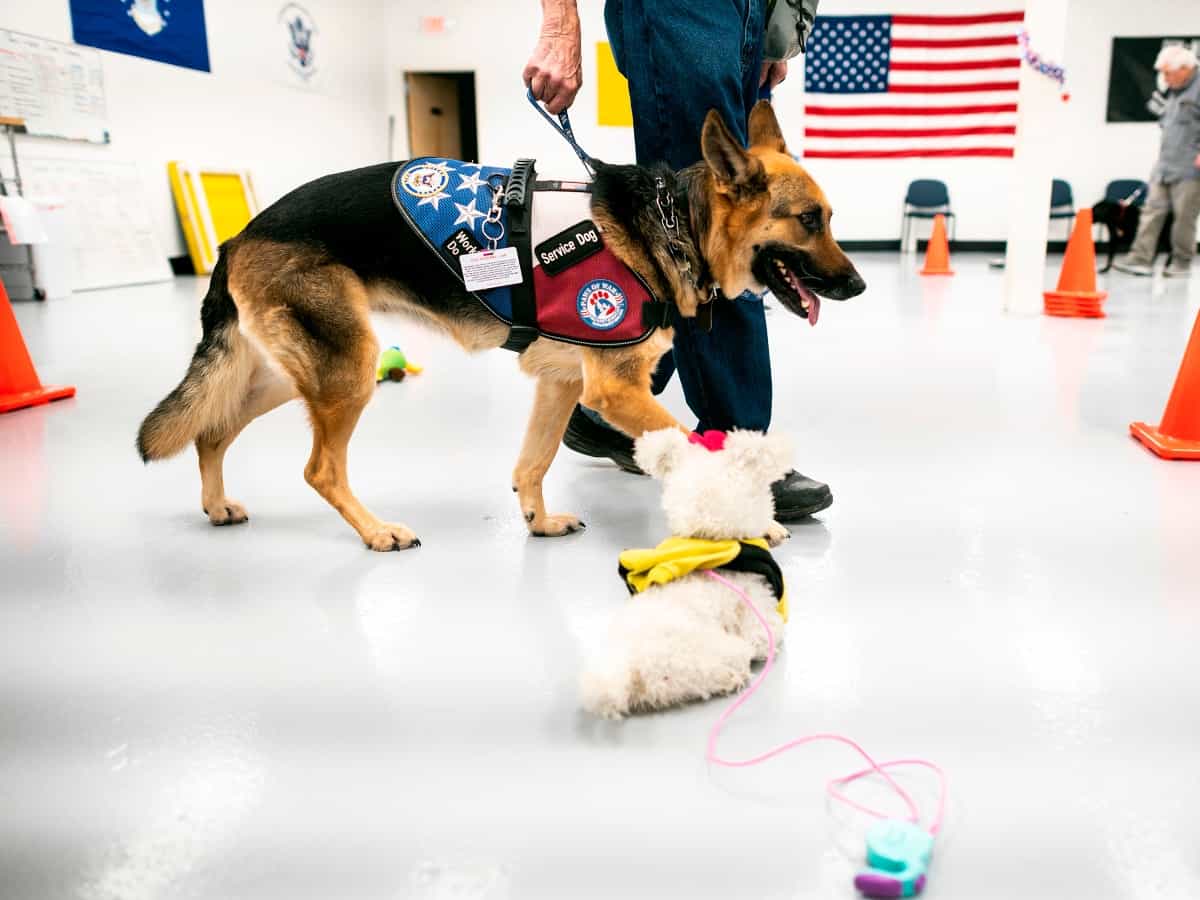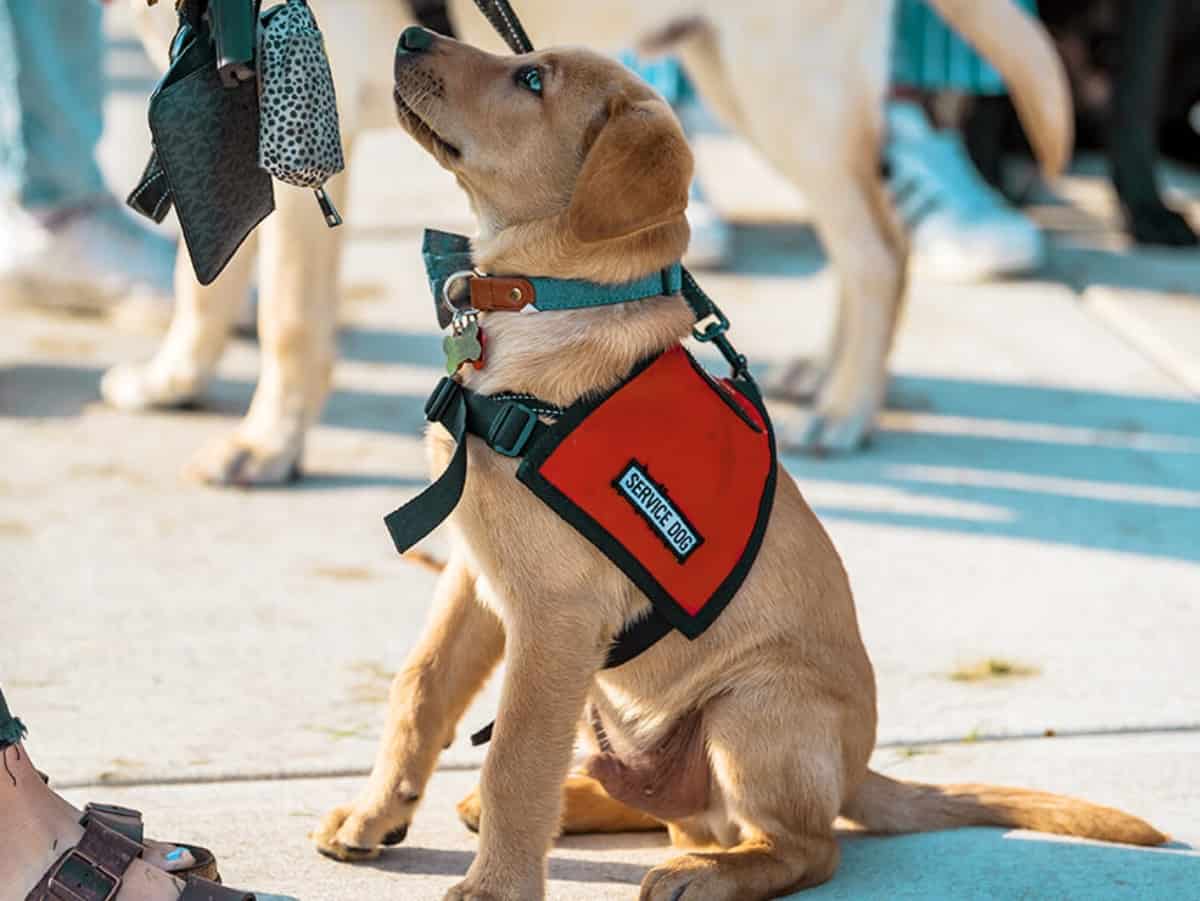We praise our furry pets and feed them as many treats as they want. We play with them, take walks with them, and keep them as safe as possible. However, many owners rely on their dogs for daily tasks. Dogs have been domesticated and embraced as companions for a very long time, but as people’s habits have changed historically, the role of pets has also developed. It seems that people can train their dogs to do almost anything and help out in any way. It is incredible to see what some dogs can do and the ways they assist disabled people daily. Once people start speaking about the distinctions and unique characteristics of a service dog vs emotional support dog, it can get confusing.
Read through this article to learn the roles, rules, and laws of owning a service dog and emotional support dog.
A Service Dog vs Emotional Support Dog: The Question at Hand
Both service dogs and emotional support dogs help their owners complete daily tasks, but they do this in different ways.
Introduction to Service Dogs
From birth, service dogs get special training to assist owners with disabilities. Service dog trainers usually send service dogs after two years of training.
Owners of service dogs can have a range of disabilities that they need help with. Service dogs help blind owners with navigation and alert deaf owners to danger. Other service dogs get trained to remind owners with Alzheimer’s or Dementia to take prescriptions. Other tasks include assisting their owner during a seizure, helping an owner in a wheelchair reach something or move around, and comforting their owner who is experiencing a PTSD breakdown.
The phrases psychiatric service dog, signal dog, seeing-eye dog, and guide dog refer to the tasks your therapy dog assists you with. Different types of service dogs have different legal protection. In general, psychiatric service dogs can travel less with their owner in public. Guide dogs, signal dogs, and seeing-eye dogs do not have these limitations.

What Do Emotional Support Dogs Do?
Emotional support dogs’ sole role is to comfort their owners with their presence. The most common emotional support animal is a family pet. Any dog can be an emotional support animal with medical recognition from your healthcare provider. Unlike service dogs, which get sent to new owners after training.
Owners of emotional support dogs typically have mental disabilities, which make them overly stressed, anxious, or depressed. Their emotional support dog’s presence helps them complete these public and home tasks. While emotional support dogs do not need special training to meet their roles, they are just as inseparable from their owners as service dogs.
A Short and ‘Pawsome’ History Lesson
The terms emotional support dog and service dog are pretty new to most people. The 1990 Americans with Disabilities Act (ADA) is the first legal recognition of emotional support and therapy animals. This act set into place many federal laws protecting disabled individuals, in the workplace and in society, from discrimination.
This act is an accumulation of laws protecting disabled people. Notably, it codified standards that protect assistive animal usage at the federal level of government. This overruled many state laws that discriminated against the use of service dogs and emotional support dogs. It also added protections from discrimination and public harassment.
Keep in mind that local or state laws may require you to designate your therapy dog or emotional support dog with specific clothing or tags. State laws may also stipulate whether service dogs in training can accompany their owners to places. State laws also interpret how federal laws apply to assist animal owners.
ADA: Licensing for a Service Dog vs Emotional Support Dog
The ADA does not issue licenses for service dogs and emotional support dogs. Owners obtain service dog licenses at the state level. You should contact your local government agencies for more information. State and local departments don’t issue licenses for emotional support animals. Your primary health care provider and therapist qualify your dog as an emotional support animal.
ADA: Housing with a Service Dog vs Emotional Support Dog
The Fair Housing Act and ADA give disabled owners the right to live in pet-free buildings with their help dogs. Pet fees for these owners are also waived through the Fair Housing Act.
When applying to live in a pet-free apartment building, be transparent and state that you will be living with an emotional support dog or service dog. Additionally, say what disability your pet is assisting you with. Your renters often require you to submit an emotional support animal letter or doctor’s note before qualifying you to live in your new home. Service dog owners may also have to show documentation stating that their animal is a service dog.
You also likely are not required to have pet insurance, although this is not prohibited by law. Keep in mind that service dogs may need additional protection through their insurance.

ADA: Traveling with a Service Dog vs Emotional Support Dog
If you travel with a service dog and get confronted by a business owner or employee, you have two main options.
1. Present a service dog registration identification card. If your state registers your service dog, then you get given an ID card. After showing this card, employees cannot ask you to remove the animal.
2. Answer the business owner’s questions. Legally, business owners can only ask you whether your dog is a service dog and what are its specific tasks. The law bars business owners and employees from asking any more questions about your dog or disability. If you answer these two questions, then you don’t have to show your ID.
Service dogs, unless they are psychiatric service dogs, can travel anywhere. Emotional support dogs cannot.
Most public or privately-owned buildings do not allow emotional support dogs. Grocery stores, restaurants, schools, and shops bar them from entering unless otherwise noted. The Fair Housing Act protects owners who want to bring their emotional support dog to a hotel most of the time. The ADA does not give you the right to bring your emotional support dog to work.
Additionally, since January 2021, the ADA no longer protects you from airlines not allowing you to travel with your emotional service dog or psychiatric service dog during flights.
How to Approach a Service Dog vs Emotional Support Dog
Emotional support dogs and service dogs don’t frequently interact with anyone other than their owners. Strangers should not approach emotional support dogs and service dogs without explicit permission from their owners.
Service dogs are in public places to do tasks and assist their owners. Service dogs work in public, so don’t distract them. A service dog is trained to stay calm when someone comes up to them unless they seem threatening. Regardless, you should try as much as possible to avoid helping a service dog, even if they do look cute in their neon jacket.
Do Service Dogs and Emotional Support Dogs Need Training and Certification?
Legally speaking, neither of these two types of dogs need to be certified to do their tasks. However, it is rare to see a service dog not trained or certified. Like normal dogs, if your service dog or emotional support dog attacks someone or causes issues in a public setting, you are liable.
The ADA gives disabled dog owners the right to train their dogs as service dog or choose a professional to train their dogs. Most people take it in good faith that your dog will act to help you if you have a disability.
Service dogs can practically travel anywhere as long as you provide an ID or state what the dog is helping with. Trained and untrained dogs have different temperaments. It takes a couple of years to train a service dog, and most trainers teach service dogs in their formative years.
Emotional support dogs do not require training to complete their tasks. However, many nonprofit organizations, such as the American Kennel Club (AKC), offer training for emotional support dogs. Many of these organizations, especially the AKC, provide courses that improve emotional support dogs’ temperaments.

Key Takeaways:
- Service dogs help disabled owners complete specific tasks
- Emotional support dogs comfort their owner and do not require specific training
- Service dogs can travel everywhere, while emotional support dogs can travel to only limited places
- The Fair Housing Law allows service dog owners and emotional service dog owners to live in pet-free buildings



